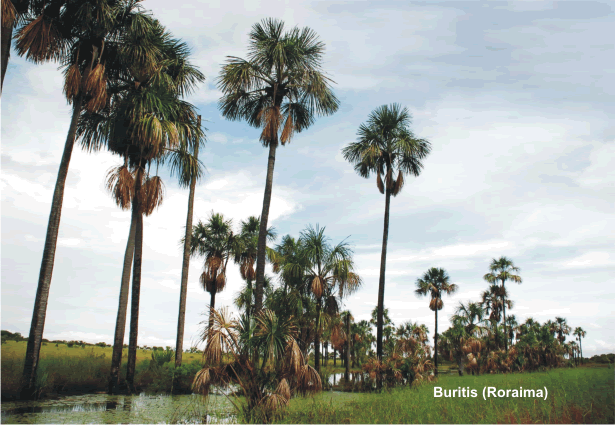RIO PANDEIROS: território e história de uma área de proteção ambiental no norte de Minas Gerais
DOI:
https://doi.org/10.5654/acta.v3i5.214Resumo
RESUMO A bacia hidrográfica do rio Pandeiros está localizada na região Norte de Minas Gerais, envolvendo os municípios de Januária, Bonito de Minas e Cônego Marinho. Foi transformada em Área de Proteção Ambiental pela sua importância ecológica para a manutenção do ecossistema da região, o cerrado e para o rio São Francisco. A transformação trouxe consigo a necessidade de formação de novas relações com a natureza, gerando conflitos. Esses conflitos são reflexos de uma construção histórica, marcada pela ocupação e economia de toda uma região mineira. Antes de ser instituída a APA a região já estava ocupada há séculos, compondo pequenas comunidades que possuem sua atividade na agricultura familiar e a pecuária. Essas comunidades formaram os aspectos culturais que marcam a região, conhecida como Sertão Mineiro. Na década de 1970 foi introduzida uma nova atividade econômica que definiu alterações ambientais e culturais na área. Iniciar a produção de carvão vegetal na região foi uma decisão do Estado, com o objetivo de atender a demanda por essa matéria-prima nas indústrias siderúrgicas. O fato foi decisivo para a configuração do território hoje existente, marcado pela degradação ambiental decorrente da produção de carvão com a vegetação nativa do Cerrado e os conflitos decorrentes dessa atividade, na maioria das vezes ilegais. O presente artigo busca demonstrar a importância de considerar os aspectos históricos da formação de um território, para a gestão de uma Unidade de Conservação e a redução dos conflitos ali presente. Palavras-chave: Área de Proteção Ambiental; Sertão; território; conflitos. ABSTRACT The basin of the river Pandeiros is located in the northern region of Minas Gerais, involving the municipalities Januária, Bonito de Minas and Cônego Marino. Was transformed into the Environmental Protection Area for its ecological importance for maintaining the region's ecosystem, the cerrado and the river San Francisco. The transformation brought with it the need for formation of new relationships with nature, generating conflicts. These conflicts are reflections of a historical building, marked by the occupation and economy of a mining region. Before being introduced to the “APA” region was occupied for centuries, forming small communities that have their activity in family farming and livestock. These communities formed the cultural aspects that characterize the region, known as Sertão Mineiro. In the 1970s it was introduced a new economic activity that defined changes in environmental and cultural area. Start the production of charcoal in the region was a decision of the state, aiming to meet the demand for this raw material in steel industries. The fact was decisive for the configuration of the existing territory today, marked by environmental degradation resulting from production of coal with the native vegetation of the Cerrado and the conflicts arising from such activity, most often illegal. This article aims to demonstrate the importance of considering historical aspects of the formation of a territory for the management of a conservation unit and the reduction of this conflict there. Key words: Environmental Protection Area; Sertão; territory; conflicts. DOI: 10.5654/actageo2009.0305.0002Downloads
Downloads
Publicado
Edição
Seção
Licença
PORTUGUÊS A Revista ACTA Geográfica deterá os direitos autorais dos trabalhos publicados. Os direitos referem-se a publicação do trabalho em qualquer parte do mundo, incluindo os direitos às renovações, expansões e disseminações da contribuição, bem como outros direitos subsidiários. Os(as) autores(as) têm permissão para a publicação da contribuição em outro meio, impresso ou digital, em português ou em tradução, desde que os devidos créditos sejam dados à Revista ACTA Geográfica.
ENGLISH ACTA Geográfica Journal will obtain the auctorial rights for all published texts. This also implies that the text can be published anywhere in the world, including all rights on renewal, expansion and dissemination of the contribution, as well as other subsidiary rights. The author’s get permission to publish the contribution in other medias, printed or digital, itmay be in Portuguese or translation, since the publication is credited to ACTA Geográfica Journal.

Este obra está licenciado com uma Licença Creative Commons Atribuição 4.0 Internacional.










